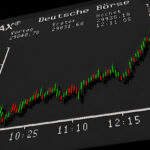The Japanese Yen (JPY) remains under severe pressure after falling to its lowest level since March 2025, as market participants digest the Bank of Japan’s (BoJ) latest policy announcement. While the central bank did raise its inflation forecast for FY2025 from 2.2% to 2.7%, BoJ Governor Kazuo Ueda struck a dovish tone in his press briefing, signaling no rush toward monetary tightening.
Ueda’s message was clear: the BoJ will remain data-dependent and patient, especially in light of the recently signed US-Japan trade agreement that could have major economic implications. He emphasized that the bank will not be sway by short-term inflationary blips, suggesting that rate hikes remain on the distant horizon. This narrative disappointed JPY bulls hoping for stronger hawkish cues.
BoJ Policy Stance Dims Rate Hike Hopes Despite CPI Forecast Hike
The BoJ’s July policy meeting ended without a change in the benchmark interest rate, as widely expected. However, it was the central bank’s updated guidance that trigger bearish sentiment in the Japanese yen.
While Japan’s core CPI forecast upgraded to 2.7% – a sign of persistent inflation pressures – the tone from policymakers failed to indicate any urgency to act. Ueda’s message that policy will be decide “without preconception” reaffirmed the bank’s cautious normalization path, which contrasted sharply with global central banks’ earlier aggressive hikes.
Political instability has added to the Yen’s fragility. The ruling Liberal Democratic Party’s defeat in the July 20th election has raised fresh concerns over Japan’s fiscal reform trajectory, casting doubts on future policy stability.
Weak PMI, Tepid Recovery Underscore Japan’s Economic Vulnerability
Adding fuel to the JPY’s bearish fire was the final S&P Global Japan Manufacturing PMI for July, which came in at 48.9, down from June’s brief stabilization. Although it was marginally above the flash reading of 48.8, it still signals contraction – a worrying sign for an economy seeking consistent post-pandemic momentum.
Interestingly, the PMI survey conducted prior to the announcement of the US-Japan tariff deal, which reduced tariffs from 25% to 15%. Even with this positive development, forward-looking sentiment remained lukewarm, suggesting that broader structural headwinds continue to plague Japan’s industrial base.
US Dollar Soars as Fed Signals Delayed Cuts
Meanwhile, the US Dollar (USD) continues to ride a wave of bullish momentum, having climbed to its highest level since late May. A combination of hawkish remarks from Fed Chair Jerome Powell and robust US macroeconomic data has led traders to revise down expectations of a September rate cut.
Powell stated it was “too soon” to say whether rates would be cut at the next Fed meeting, noting that the current stance is not restricting growth. That claim was supported by the Advanced GDP reading for Q2, which showed an impressive 3.0% annualized growth.
On the inflation front, the PCE Price Index – the Fed’s preferred gauge – rose to 2.6% in June, while the core measure hit 2.8%, slightly exceeding forecasts. Personal Income and Spending figures both rose 0.3% month-on-month, reinforcing the narrative of sticky inflation and a resilient consumer base.
Japanese Yen Fails to Gain from Risk-Off Mood Triggered by Trump Tariffs
Despite fresh global risk aversion following President Trump’s new executive order slapping up to 41% tariffs on several US trade partners, the JPY failed to attract typical safe-haven flows. Traditionally, geopolitical or trade uncertainty boosts the yen due to its perceived safety. However, this time, investors preferred the greenback – which is currently offering higher real yields – over the low-yielding yen.
The new tariffs are expected to take effect in seven days and follow a breakdown in the latest US-China trade talks. Markets are now reassessing potential economic fallout and central bank responses, particularly from export-heavy economies like Japan.
Japan’s Economy Minister Ryosei Akazawa stressed the need for implementing the US-Japan deal swiftly, expressing concern over speculative FX trends. However, his reluctance to intervene verbally in JPY levels further weakened investor confidence in a near-term policy defense of the yen.
Eyes on NFP and ISM Manufacturing – The Next Big USDJPY Movers
With the USDJPY pair hovering near multi-month highs, the next catalyst will be today’s Nonfarm Payrolls (NFP) data. Analysts expect the US economy to have added 110K jobs in July, with the Unemployment Rate seen ticking up to 4.2% from 4.1%.
The ISM Manufacturing PMI also due today will be closely watch for signs of ongoing economic resilience or potential slowdown. A stronger-than-expected NFP print could boost US yields and the dollar further, putting renewed downside pressure on the yen.
However, any signs of labor market weakness could reignite Fed rate-cut bets and pause USDJPY’s rally, especially if ISM data signals deteriorating business conditions.
Conclusion
The Japanese Yen’s prolonged weakness reflects a fundamental divergence between the BoJ’s ultra-cautious policy approach and the Fed’s still-hawkish tone. While the BoJ did acknowledge inflation concerns, the lack of a clear tightening timeline signals hesitation at a time when global central banks are reassessing easing cycles.
USDJPY may remain buoyant above 157.00 in the near term, especially if the NFP data supports the Fed’s “highe for longer” stance. However, market overconfidence in USD strength could tested in September if political risk (especially around trade) intensifies.
Watch for potential intervention rhetoric from Japanese officials if the yen nears the 160 psychological level again.
USDJPY Technical Outlook
Immediate Resistance: 157.80
Major Resistance: 158.65 (May 2025 high)
Immediate Support: 156.90
Key Support: 155.70 (Previous breakout zone)
If the pair clears 157.80 on strong US jobs data, the road toward retesting the May high around 158.65 opens up. However, a softer NFP or ISM print could push the pair back toward 156.00-155.70 support.
Disclaimer: This blog is for informational purposes only and does not constitute financial advice. Always conduct your own research and consult a professional advisor before making investment decisions.
[sc_fs_multi_faq headline-0=”h2″ question-0=”Why is the Japanese Yen weakening?” answer-0=”The JPY is under pressure due to the BoJ’s dovish tone, weak economic data, political uncertainty, and stronger USD demand amid reduced Fed rate-cut expectations.” image-0=”” headline-1=”h2″ question-1=”Will the BoJ hike rates in 2025?” answer-1=”The BoJ left the door open for a rate hike later this year, but current signals suggest a very gradual and cautious approach. Markets are not pricing a hike before Q4 2025.” image-1=”” headline-2=”h2″ question-2=”What could reverse the Yen’s weakness?” answer-2=”Key triggers would include stronger-than-expected Japanese data, verbal or actual FX intervention by Japanese authorities, or a broad USD correction after weaker US macro data.” image-2=”” count=”3″ html=”true” css_class=””]









